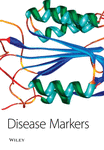Association of PPARγ2 (Pro12Ala) and Neuropeptide Y (Leu7Pro) Gene Polymorphisms with Obstructive Sleep Apnea in Obese Asian Indians
Abstract
Background: Obstructive sleep apnea (OSA) is prevalent in 7.5% in urban Asian Indians. Peroxisome proliferator activated receptor gamma2 (PPARγ2) has been implicated in adipocyte differentiation. Neuropeptide Y (NPY) is also considered as a candidate gene for excess body fat accumulation. The association of PPARγ2 (Pro12Ala) and NPY (Leu7Pro) gene polymorphisms with OSA has not been studied in Asian Indians.
Objective: To study the distribution of PPARγ2 (Pro12Ala) and NPY (Leu7Pro) polymorphism in Asian Indians with and without OSA.
Methods and results: This study was carried out in 252 obese subjects [(body mass index (BMI > 25 kg/m2)]; 142 with OSA and 110 without OSA. Measurements included anthropometric and biochemical parameters (fasting blood glucose, lipid profile, various circumferences and skin-fold thicknesses). PPARγ2 (Pro12Ala) and NPY (Leu7Pro) gene polymorphisms were studied in all subjects. The frequency of the variant allele (Ala12) of PPARγ2 gene was significantly higher in subjects with OSA (14.4%) when compared with subjects without OSA (5.5%; χ2 = 9.7; p = 0.001). The distribution of the variant allele (Pro7) of NPY gene was comparable in subjects with OSA (3.5%) and without OSA (3.6%; χ 2 = 0.001, p = 0.94).
Conclusion: This study reveals a significantly higher frequency of PPARγ2 (Ala12) allele in obese Asian Indians with OSA when compared to obese Asian Indians without OSA.




